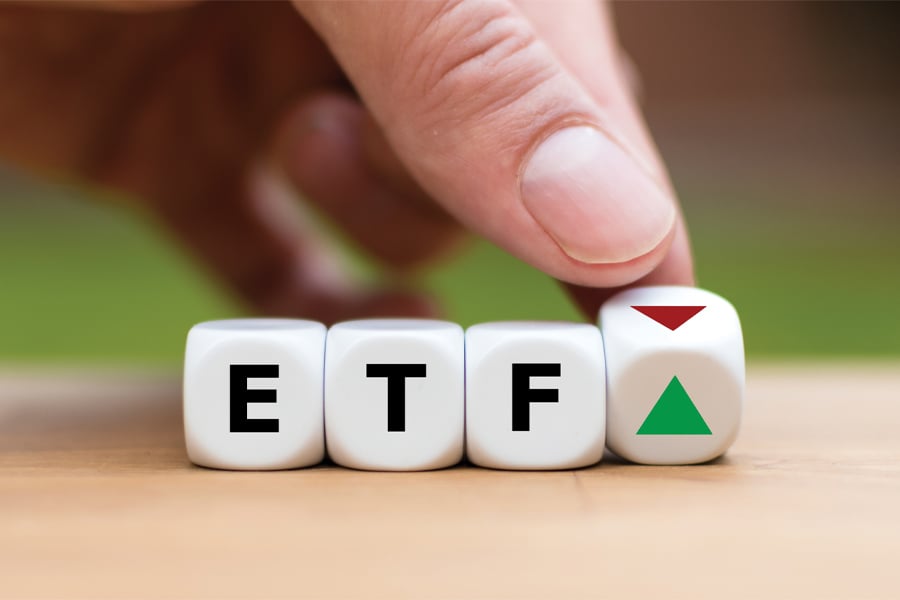

2024 isn't over yet, but already investors in the US have officially brought their ETF buying to a new annual high.
That's according to a report from analysts at National Bank Financial, a subsidiary of one of Canada's largest banks, which found ETF inflows reached a record-breaking $164 billion in November.
The figure for the month eclipsed the previous monthly ETF inflows record set in July of this year while bringing the year-to-date total to nearly $1 trillion. The year’s cumulative inflows so far, tantalizingly close to a new ten-figure high, have already surpassed the previous annual record of $947 billion set in 2021.
“Several factors likely contributed to November’s substantial ETF flows,” the report stated, citing to a strong US stock market, renewed interest in small-cap and financial sector ETFs, and tax-loss harvesting activity.
Based on a reading of Bloomberg data, the researchers found US-centric equity ETFs led the charge on the stocks side, pulling in $113 billion of the $119 billion equity total for the month. International developed and global ETFs saw muted demand, while emerging market ETFs experienced outflows. In a dramatic display of just how quickly investor sentiment could turn, China equity ETFs shed $4.6 billion in November, a stark reversal from their $9.1 billion October haul.
Fixed income ETFs also recorded robust activity, with $28.5 billion in inflows last month. That brought the category’s year-to-date total to $276 billion, surpassing its 2021 record of $211 billion. Within the fixed income sector, high-yield bond ETFs saw significant interest, possibly reflecting investor confidence in the economic outlook and a “risk-on” sentiment after the election results and the Federal Reserve’s latest 25-basis-point rate cut.
"On the other hand, despite the Fed’s recent rate cut, the long end of the yield curve remains elevated amid concerns for the inflationary consequences of Trump’s fiscal policies," the researchers noted.
The re-election of Donald Trump to the White House had a noticeable impact on sector-specific and thematic ETF flows, they said. Financial sector ETFs saw increased demand, driven by expectations that his second term could usher in regulatory easing that would echo his first administration. Small-cap ETFs, which investors see as beneficiaries of a domestically focused Republican-led government, were also a major draw in November.
Meanwhile, crypto-asset ETFs attracted $7.6 billion in inflows, representing 9.4 percent of their starting asset base for the month as markets digested the prospects of a more relaxed regulatory regime for crypto under Trump’s leadership.
And while sustainable investing has slowed down considerably from its pandemic highs, ESG ETF flows maintained forward momentum with $1.2 billion in November inflows, marking the seventh consecutive month of positive activity.

Decision deepens the two firms’ decade-long relationship

Linqto Inc. was one of the first tech platforms to promise access to small investors into the high-risk, high-reward world of private investments.

Since Vis Raghavan took over the reins last year, several have jumped ship.

Chasing productivity is one thing, but when you're cutting corners, missing details, and making mistakes, it's time to take a step back.

It is not clear how many employees will be affected, but none of the private partnership's 20,000 financial advisors will see their jobs at risk.
Stan Gregor, Chairman & CEO of Summit Financial Holdings, explores how RIAs can meet growing demand for family office-style services among mass affluent clients through tax-first planning, technology, and collaboration—positioning firms for long-term success
Chris Vizzi, Co-Founder & Partner of South Coast Investment Advisors, LLC, shares how 2025 estate tax changes—$13.99M per person—offer more than tax savings. Learn how to pass on purpose, values, and vision to unite generations and give wealth lasting meaning
